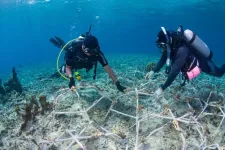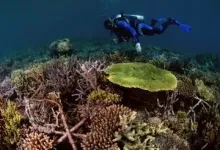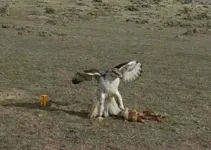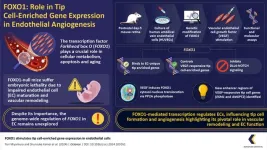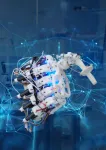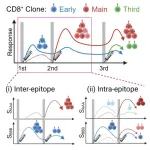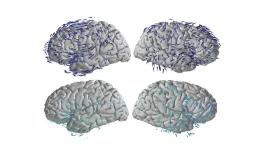(Press-News.org) Planting new coral in degraded reefs can lead to rapid recovery – with restored reefs growing as fast as healthy reefs after just four years, new research shows.
Reefs worldwide are severely threatened by local and global pressures. In Indonesia, where the study was carried out, destructive blast fishing destroyed large reef areas 30-40 years ago – with no signs of recovery until now.
The Mars Coral Reef Restoration Programme attempts to restore degraded reefs by transplanting coral fragments onto a network of interconnected “Reef Stars” (sand-coated steel frames).
Researchers studied these reefs to assess whether coral restoration can bring back the important ecosystem functions of a healthy reef.
The study was carried out by University of Exeter researchers in collaboration with the Research Center for Oceanography, National Research and Innovation Agency (BRIN) in Indonesia, Mars Sustainable Solutions and Lancaster University.
“The speed of recovery we saw is incredible,” said lead author Dr Ines Lange, from the University of Exeter.
“While reef restoration cannot solve the problem that reefs are severely threatened by climate change, it shows that active management actions can help to boost the resilience of specific reefs, and bring back important functions that are critical for marine life and local communities.”
Exeter researchers developed a method to monitor "reef carbonate budgets" – the net production or erosion of reef framework over time.
These carbonate budgets are a key predictor of the reef’s ability to grow, keep up with sea-level rise, protect coastlines from storms and provide habitat for reef animals.
To evaluate if and how fast these reef functions return after coral restoration, carbonate budgets were measured at Mars reef restoration sites that were restored a few months, one year, two years and four years ago, as well as on degraded and healthy control sites.
In the years following coral transplantation, coral cover, coral colony sizes and carbonate production rates tripled, and after four years, restoration sites were indistinguishable from nearby healthy reefs in all investigated parameters.
This means that after only four years, restored reefs are growing at the same speed as healthy reefs, provide similar habitat for marine life, and efficiently protect the adjacent island from wave energy and erosion.
However, as transplanted coral fragments are a mix of different branching coral types, the community composition on restoration sites differs from healthy reefs, which also harbour many boulder-like and encrusting corals.
This may affect habitat provision for larger marine species and resilience to future heatwaves, as branching corals are more sensitive to bleaching.
Dr Tim Lamont, from Lancaster University, who initiated the research collaboration, added: “This is a really encouraging discovery.
“If we can maintain climate conditions that allow for coral survival, it’s possible to restore even very damaged reefs back to healthy, functional systems within relatively short periods of time.”
Co-author Dr Tries Razak, from BRIN Indonesia, said: “Through this research collaboration, I am delighted to observe the highly productive partnership between a distinguished group of international scientists and our team of local scientists and Masters students in Indonesia.
“This collaborative effort not only advances scientific research in Indonesia but also contributes significantly to the capacity building for future generations of Indonesian scientists.”
Summing up her experience in Indonesia, Dr Lange added: “It was a great experience to work so closely with a diverse group of international researchers and the skilled local restoration team.
“We all learned a lot from each other.”
The paper “Coral restoration can drive rapid reef carbonate budget recovery” is published in Current Biology by Ines Lange, Tries Razak, Chris Perry, Permas Maulana, Mochyudho Prasetya, Irwan and Timothy Lamont.
END
Restored coral reefs can grow as fast as healthy reefs
2024-03-08
ELSE PRESS RELEASES FROM THIS DATE:
Continuous Medicaid eligibility during the pandemic and postpartum coverage, health care, and outcomes
2024-03-08
About The Study: In this study including 47,000 participants, continuous Medicaid eligibility during the COVID-19 pandemic significantly reduced loss of Medicaid after birth, suggesting similar uninsurance reductions may be expected from post-pandemic postpartum Medicaid extensions, which most states plan to implement.
Authors: Jamie R. Daw, Ph.D., of the Columbia University Mailman School of Public Health in New York, is the corresponding author.
To access the embargoed study: Visit our For The Media website at this link https://media.jamanetwork.com/
(doi:10.1001/jamahealthforum.2024.0004)
Editor’s ...
Perspectives of Black patients on racism within emergency care
2024-03-08
About The Study: This qualitative study including 25 interviews with Black patients discharged from the emergency department described these patients’ perspectives about racism in health care, recent clinical experiences, and thoughts on system improvements. Black patients described a notable amount of medical mistrust, anticipation of racism in emergency care, and personal experiences with clinical instances of racism in emergency treatment.
Authors: Anish K. Agarwal, M.D., M.P.H., M.S., of the University of Pennsylvania in Philadelphia, is the corresponding ...
Impact of onset time, number, type, and sequence of extrahepatic organ failure on prognosis of acute-on-chronic liver failure
2024-03-08
Background and Aims
The impact of the characteristics of extrahepatic organ failure (EHOF) including the onset time, number, type, and sequence on the prognosis of acute-on-chronic liver failure (ACLF) patients remains unknown. This study aimed to identify the association between the characteristics of EHOF and the prognosis of ACLF patients.
Methods
ACLF subjects enrolled at six hospitals in China were included in the analysis. The risk of mortality based on the characteristics of EHOF was evaluated. Survival of study groups was ...
High-tech 'paint' could spare patients repeated surgeries
2024-03-08
UVA Health researchers have received $2.8 million to advance their development of a high-tech way to save heart and dialysis patients from the need for multiple surgeries.
Researchers Lian-Wang Guo, PhD, and K. Craig Kent, MD, are pioneering a quick and gentle technique to “paint” tiny nanoparticles on transplanted veins to prevent the veins from becoming clogged in the future. This type of blockage often causes cardiovascular and dialysis patients to require repeated surgeries; approximately half of all heart ...
Unveiling the role of FOXO1 in vascular development and transcriptional dynamics in endothelial cells
2024-03-08
The human vascular system, a complex network of blood vessels, plays an essential role in maintaining health. Understanding the molecular mechanisms underlying vascular development is important for tackling age-related disorders. The Forkhead box O (FOXO1) transcription factor is crucial in processes related to aging, cellular metabolism, and apoptosis. Despite its significance, the comprehensive regulation of FOXO1 across the genome in endothelial cells (EC) has not been investigated.
In a new paper published in iScience in February 2024, a research team from Kumamoto University ...
Call for papers| Special Issue on advanced robotics and tissue engineering
2024-03-08
Scope
For decades, robotic systems have played a pivotal role in nurturing the growth of tissue-engineered constructs in controlled environments through the provision of mechanical stimulation. The importance of physical stresses in tissue maturation is not only intuitive from our own bodily experiences but is also supported by a growing body of mechanotransduction research. However, experimental studies have predominantly remained confined to basic in vitro setups, hampering our ability to produce functional grafts that can translate into clinical practice. Emerging evidence suggests that replicating physiological stresses more faithfully could further enhance the functionality of tissue ...
Optimizing boosters: How COVID mRNA vaccines reshape immune memory after each dose
2024-03-08
mRNA vaccines developed against the spike glycoprotein of severe acute respiratory syndrome type 2 coronavirus (SARS-CoV-2), displayed remarkable efficiency in combating coronavirus 19 (COVID-19). These vaccines work by triggering both cellular and humoral immune responses against the spike protein of the virus. Cellular immunity may play a more protective role than humoral immunity to variants of concerns (VOC) against SARS-CoV-2, as it targets the conserved regions of spike protein and possibly cross-reacts with other variants.
Since a single spike epitope is recognized by multiple T-cell clones, the ...
Mapping the future’s sweet spot for clean energy and biodiversity
2024-03-08
Climate change is driving both the loss of biodiversity and the need for clean, renewable energy. It is also shifting where species are expected to live in the future. Yet these realities are rarely considered together. Where can clean energy projects be built without impacting the future habitat ranges of threatened and endangered species?
A study from the University of California, Davis, examines this question by overlaying renewable energy siting maps with the ranges of two species in the southwestern United States: the iconic and climate-vulnerable ...
Brain waves travel in one direction when memories are made and the opposite when recalled
2024-03-08
In the space of just a few seconds, a person walking down a city block might check their phone, yawn, worry about making rent, and adjust their path to avoid a puddle. The smell from a food cart could suddenly conjure a memory from childhood, or they could notice a rat eating a slice of pizza and store the image as a new memory.
For most people, shifting through behaviors quickly and seamlessly is a mundane part of everyday life.
For neuroscientists, it’s one of the brain’s most remarkable capabilities. That’s because different activities require the brain to use different combinations of its many regions and billions of neurons. How ...
Lack of focus doesn’t equal lack of intelligence — it’s proof of an intricate brain
2024-03-08
By Gretchen Schrafft, Science Communications Specialist, Robert J. & Nancy D. Carney Institute for Brain Science
PROVIDENCE, R.I. [Brown University] — Imagine a busy restaurant: dishes clattering, music playing, people talking loudly over one another. It’s a wonder that anyone in that kind of environment can focus enough to have a conversation. A new study by researchers at Brown University’s Carney Institute for Brain Science provides some of the most detailed insights yet into the brain mechanisms that help people pay attention amid such distraction, as well as what’s ...
